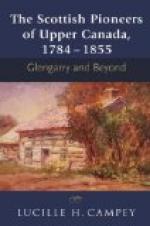[Footnote 11: Labrador (Lavrador in Portuguese) means a labourer, a serf. The Portuguese are supposed to have brought some Red Indians from this coast to be sold as slaves.]
Nevertheless these Portuguese expeditions to North America have left ineffaceable traces in the geography of the Newfoundland coast, of which (under the name of Terra Nova[12]) the governorship was made hereditary in the Corte-Real family. Cape Race for example—the most prominent point of the island—is really the Portuguese Cabo Raso—the bare or “shaved” cape—and this was by the Spaniards regarded as the westernmost limit of Portuguese sovereignty in that direction. For the Spaniards were by no means pleased at the intrusion of other nations into a New World which they desired to monopolize entirely for the Spanish Crown. They did not so much mind sharing it, along the line agreed upon in the Treaty of Tordesillas, with the Portuguese, but the ingress of the English and French infuriated them. The Basque people of the north-east corner of Spain were a hardy seafaring folk, especially bold in the pursuit of whales in the Bay of Biscay, and eager to take a share in the salt-fish trade. This desire took them in the fourteenth and fifteenth centuries to Ireland and Iceland. They began to fish off the Newfoundland coasts perhaps as early as 1525. About this time also the Emperor Charles V, King of Spain, having through one great Portuguese sea captain—Magalhaes (Magellan)—discovered the passage from Atlantic to Pacific across the extremity of South America, thought by employing another Portuguese—Estevao Gomez—to find a similar sea route through North America, which would prove a short cut from Europe to China. This was the famous “North-west Passage” the search for which drew so many great and brave adventurers into the Arctic sea of America between 1500 and 1853, to be revealed at last by our fellow countrymen, but to prove useless to navigation on account of the enormous accumulation of ice.
[Footnote 12: Corte-Real’s name of Terra Verde ("Greenland”) was soon dropped in favour of the older English name “New Land” (Newfoundland, Terra Nova). This was at once adopted by the French seamen as “Terre Neuve".]
Gomez left Corunna in the winter of 1524-5, and reached the North-American coast somewhere about Florida. He probably only began to investigate closely after he passed into the broad gulf of Maine, between Cape Cod and Nova Scotia. Here he sighted from the sea the lofty mountains of New Hampshire, and steered for the mouth of the Penobscot River (which he named the River of Deer), a title which sticks to the locality—in Deer Island—at the present day. But this being no opening of a broad strait, he passed on into the Bay of Fundy (from Portuguese word, Fundo, the bottom of a sack or passage), explored its two terminal gulfs, then returned along the coast of Nova Scotia,[13] past Cape Sable, and so to the “gut” or Canal of Canso. Gomez realized that Cape Breton was an island (we now know that it is two islands separated by a narrow watercourse), but thought that Cabot Strait was a great bay, and guessed nothing of the Gulf of St. Lawrence, and the chance of securing for Spain the possession of this mighty waterway into the heart of North America.




